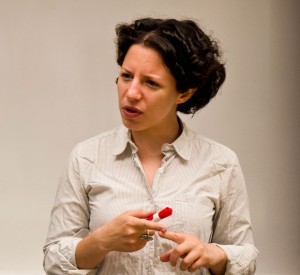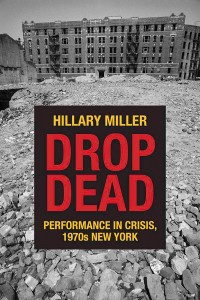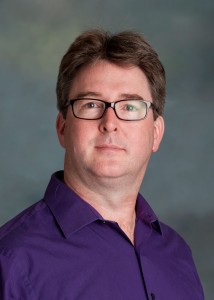![]()
Just hours after the last graduates crossed the stage in front of the Delmar T. Oviatt Library to accept their diplomas on May 22, California State University, Northridge’s top professors crossed another stage to accept high honors and shake hands with President Dianne F. Harrison.
The president, Provost Yi Li and the CSUN Foundation hosted the annual Honored Faculty Reception, which included the awarding of emeritus status to 29 veteran professors. Hundreds of colleagues, students, relatives and administrators gathered in the Grand Salon of the University Student Union to pay tribute to the award recipients.
“As we have launched our new graduates, it is a great time to reflect on the contributions of our faculty and recognize the commitment of faculty who have been here for 20, 30 and 40 years,” Harrison noted. “I want to thank you all for your commitment to our students and our university, creating the kind of environment where our students learn best.”
Harrison presented psychology professor Ellie Kazemi with the afternoon’s highest honor, the Outstanding Faculty Award. Kazemi has demonstrated ongoing commitment to the community, including her work as a mentor in CSUN’s BUILD PODER undergraduate research training program, the president said.
“Since 2008, Ellie has provided significant contributions in teaching, research and mentoring in the Department of Psychology,” she said. Harrison noted that in a letter of recommendation, “one of her students wrote, ‘Everyone idolizes her.’ Pretty good testimony.”
Philosophy professor and Faculty President Adam Swenson, who served as master of ceremonies for the reception, presented the Distinguished Teaching, Counseling or Librarianship Awards to sociology professor Moshoula Capous-Desyllas, history professor Jeffrey Kaja and mathematics professor Mark Schilling.
Robert Gunsalus, vice president for University Advancement and president of the CSUN Foundation, presented the Extraordinary Service Award to psychology professor Debra Berry Malmberg, the Preeminent Scholarly Publications Award to English professor Iswari Pandy and the Exceptional Creative Accomplishments Award to psychology professor Luciana Lagana. The CSUN Foundation sponsors all of these awards, including the Outstanding Faculty Award.
Elizabeth Adams, associate vice president for student success, presented the Visionary Community Service-Learning Award to communication studies professor Jeanine Mingé. Adams spoke about Mingé’s long commitment to community partnerships between CSUN students, faculty and nonprofits such as R.U.T.H. (Resilience, Unity, Transformation, Hope) YouthBuild in Canoga Park, and the CSUN Performance Ensemble. This particular faculty award was sponsored by a grant from the California governor’s office.
Li thanked all of the honorees for their service.
“Your loyalty, professionalism and commitment to student success have not gone unnoticed,” Li said. “Thank you for your ongoing dedication to CSUN.”
Adams presented the 29 professors who had been awarded emeritus status by the president and the university, and the group assembled on the stage at the front of the Grand Salon. Esther Lin, daughter of mechanical engineering professor CT Lin, accepted on behalf of her father, who passed away on April 28.
The 2017 emeritus faculty are:
Karen Anderson, Library – Research, Instruction and Outreach Services
Michael Barrett, Library – Collection Access and Management Services
Don Brownlee, Communication Studies
Brian Castronovo, Modern Languages and Literatures
Deborah Chen, Special Education
Mary Curren, Marketing
Marilynn Filbeck, Family and Consumer Sciences
Timothy Fox, Mechanical Engineering
Adele Gottfried, Educational Psychology and Counseling
Jerry Ann Harrel-Smith, Family and Consumer Sciences
Catherine Jeppson, Accounting and Information Systems
Robert Kladifko, Educational Leadership and Policy Studies
CT Lin, Mechanical Engineering (posthumous)
Robert Lingard, Computer Science
Jack Lopez, English
Richard MacDonald, Family and Consumer Sciences
James Macklin, Accounting and Information Systems
Elena Marchisotto, Mathematics
Eva Margarita Nieto, Chicana/o Studies
Vicki Pedone, Geological Sciences
Kyriakos Pontikis, Family and Consumer Sciences (posthumous)
Cynthia Rawitch, Journalism
William Roberts, Economics
Maureen Rubin, Journalism
Kenneth Sakatani, Art
Diane Schwartz, Computer Science
Johnie Scott, Africana Studies
Ronald Stone, Accounting and Information Systems
Nayereh Tohidi, Gender and Women’s Studies
For more information about the accomplishments and outstanding contributions of these newest emeritus faculty members, visit http://www.csun.edu/faculty-senate/emeriti-faculty.
At the reception, university leaders also honored faculty who were marking major milestones in their service to the university. The honorees were:
25 Years of Service:
Carlos Guerrero, Chicana/o Studies
Evelyn McClave, Linguistics Program
William Whiting, Kinesiology
30 Years of Service:
John Dye, Mathematics
Matthew Harris, Music
Nicholas Kioussis, Physics and Astronomy
Alexis Krasilovsky, Cinema and Television Arts
Linda Lam-Easton, Religious Studies
CT Lin, Mechanical Engineering (posthumous)
Laurel Long, Art
Richard Lorentz, Computer Science
Steven Loy, Kinesiology
Takashi Yagisawa, Philosophy
40 Years of Service:
Maria-Isabel Herrera, Chicana/o Studies



 Miller says her book should appeal to an audience interested in cities in general, while focusing on how the arts helped to shape the constructive identity of a municipality constricted by staunch monetary regulation.
Miller says her book should appeal to an audience interested in cities in general, while focusing on how the arts helped to shape the constructive identity of a municipality constricted by staunch monetary regulation.




